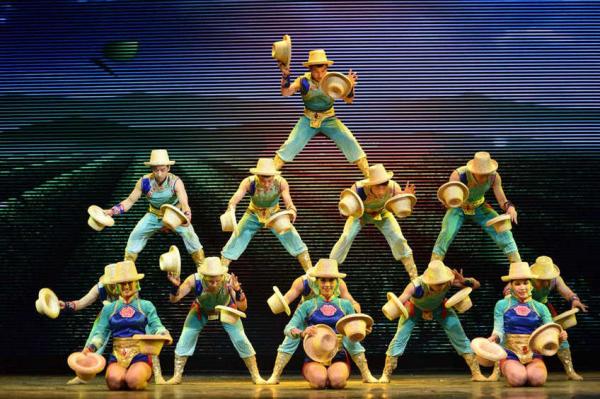Chinese Acrobatics
Chinese acrobatics is a gem of China traditional performing arts with a long history of more than 2000 years. It is also one of the most popular art forms among people.
In the ancient time and the early stage, the acrobatics was related with music and dance, playing a key role in the culture at that time. During Han and Tang Dynasty, acrobatics was further developed and enriched in the content, variety and skills. It was very prosperous just like music and dance.
However, since Song Dynasty, acrobatics were spread from the imperial court to the common people's life; however, the social status of those performers was getting down. In the late Ming Dynasty and the early Qing Dynasty, acrobatics was introduced abroad and was highly appreciated by the Americans and the Europeans. When People's Republic of China was founded in1949, the acrobatics also gained its new life and better development.

In recent years, Chinese acrobats won prizes in many international competitions, and China was internationally recognized as the first Country of Acrobatics. At present, there are over 120 acrobatic troupes above the county level, and more than 12,000 people are involved in performing. Of course, it is increasing all the time.
In the long run of development, the Chinese acrobatic art has formed its own unique features. The ancient acrobatics stemmed from the people's life and had close relationship with the lives and work. Instruments of labor like tridents, wicker rings, tables, chairs, jars, plates, and bowls were used in the performances of "Flying Trident", "Balance on Chairs", "Jar Tricks", and "Hoop Diving". All of these acts became commonplace in acrobatic performances throughout China.
The acrobatics demands years of dedication and rigorous practice. Youngsters who desire to join in professional troupes must begin their training as early as four or five year olds. In the initial years of training, children are taught and required to do the exercises of balance, tumble, dance, flexibility and their Strength. Once they have grasped the basics of the craft, the children spend the next few years in mastering and perfecting specific acts.
Shanghai Acrobatic Shows are top choices to experience the unique charm of Chinese acrobatic art.